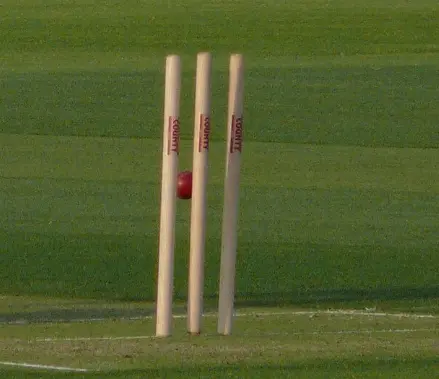In cricket, the term "wicket" refers to two distinct concepts that are equally significant to the game. First, it describes the actual structure, which consists of three wooden stumps with two bails on top that the bowler hits in order to get rid of the batter. Second, the word "wicket" can also refer to a batter being dismissed in a metaphorical sense. If a team loses five players, for instance, we say they have lost five wickets. The wicket is one of the most important components in cricket because of its dual meaning.
The ultimate objective for bowlers and fielders is to dismiss a batsman, which is commonly referred to as "taking a wicket.", as it stops a potentially dangerous batter and brings a new player to the crease, disrupting momentum and applying pressure.

A cricket team consists of 11 players, out of which 10 wickets can fall in a single innings. Once ten players are dismissed, the innings ends because only one batter is left—not enough to form a running pair. That's why "all out" means ten wickets have been lost. This number is consistent across all international formats—Test, ODI, and T20.
However, there are 12 legal types of dismissals, even though only 10 wickets can fall per innings. Some are common, while others are rare and governed by specific rules.
The rejection that occurs most frequently. If the batter hits the ball and it's caught by any fielder (including bowler or keeper) without bouncing, it's out.
If the bowler's delivery hits the stumps directly or off the batter's body/bat and dislodges the bails, the batter is bowled out.
If the ball would have hit the stumps but is blocked by the batter's leg or body (and not the bat), it's LBW—assuming the ball wasn't pitched outside leg stump.
If the batter fails to reach the crease before the fielding side breaks the stumps during a run attempt.
Happens when the batter steps out of the crease, misses the delivery, and the wicketkeeper quickly takes off the bails before the batter can return.
When playing a shot or assuming a stance, a hitter may inadvertently strike the stumps with their bat or body.
A batter is given out if they deliberately obstruct a fielder or interfere with play through words or actions.
If a batter intentionally strikes the ball twice, they can be declared out—unless it's to protect the stumps and with consent.
A batter must be ready to face a ball within three minutes of the previous dismissal. Delay can result in this rare dismissal.
A bowler can dismiss the non-striker if they leave the crease early before the ball is bowled.
If a batter touches the ball with their hand not holding the bat without the fielding side's permission.
Retired Out – When a batter leaves the field without injury and chooses not to return, they are marked as retired out.
When 10 players are out, the batting innings is over. The remaining player cannot bat alone, and the opposing team takes its turn to bat or the game concludes if it's the second innings.
No, technically, only one batter may be removed for each valid delivery. The first legitimate expulsion counts, even in perplexing situations like a run-out and LBW on the same ball.
A team is declared all out once 10 wickets fall. Only one batter remains, making it impossible to continue play.